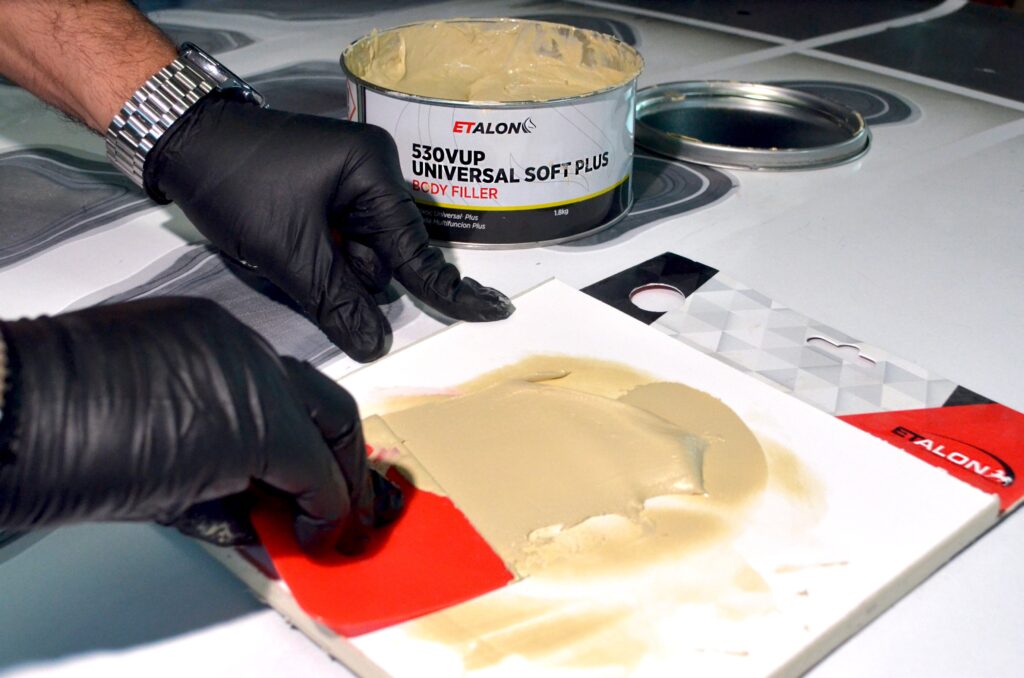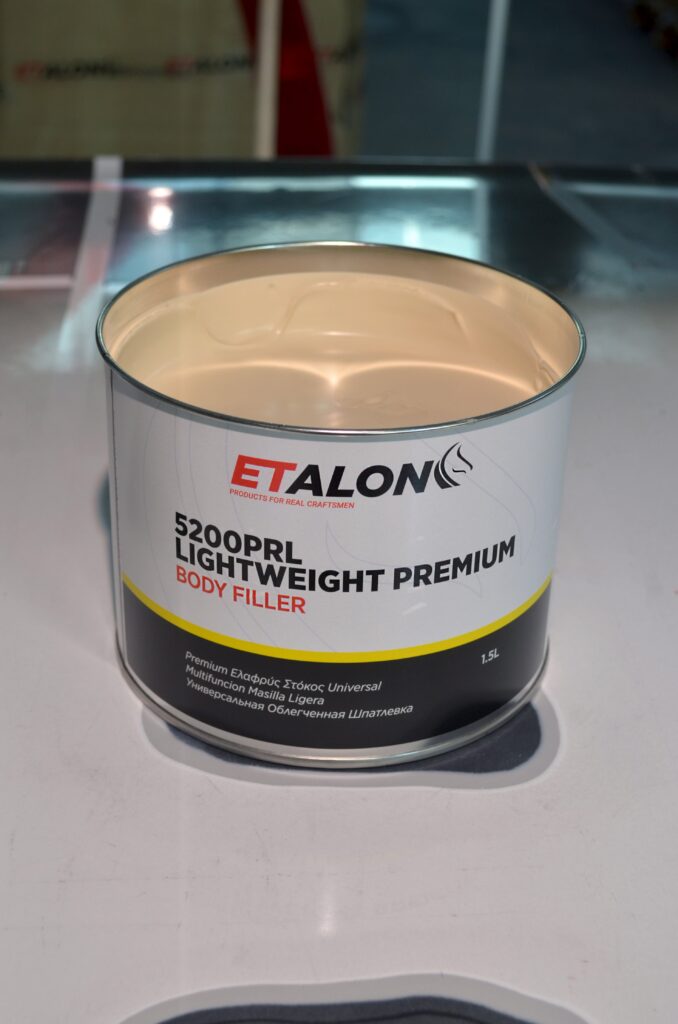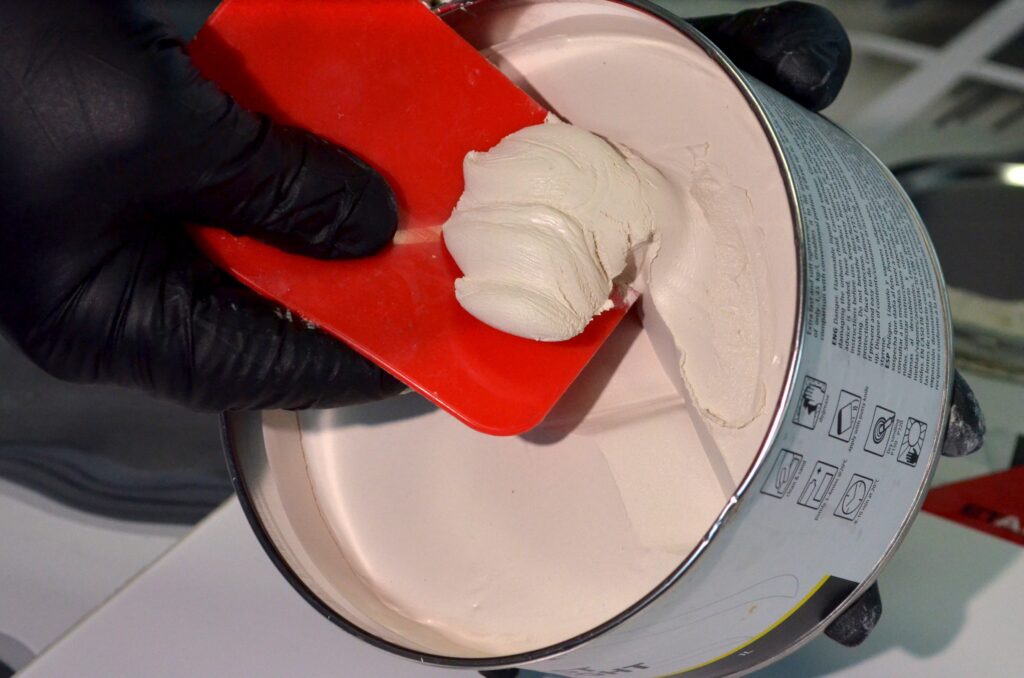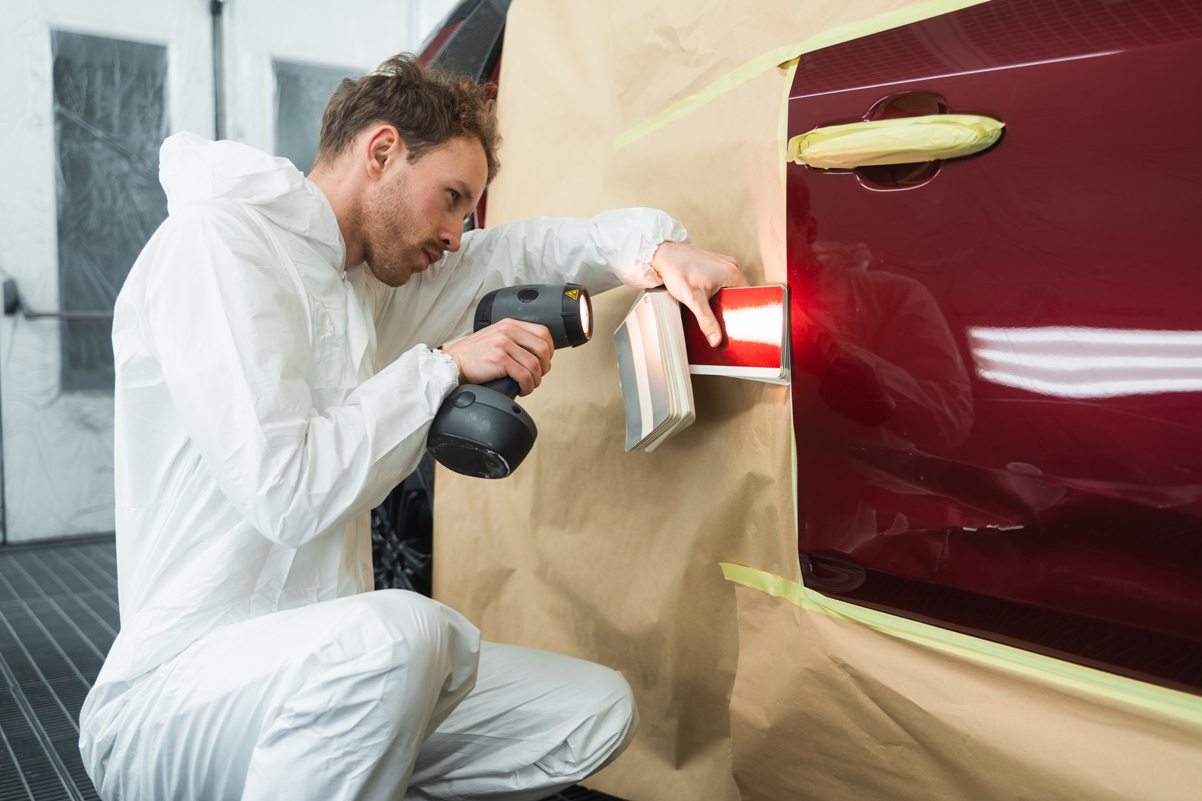In the realm of automotive body repair, the choice between lightweight body filler and standard weight body filler is crucial, as each type offers distinct advantages depending on the repair task at hand. These fillers or putties in Europe, are essential for smoothing over dents, holes, and other imperfections to restore a vehicle’s pre-accident smooth surface.
Standard Weight Body Filler
Standard weight body filler is typically denser and was the traditional choice for body repair before the development of lightweight fillers. Specific weight of those body fillers usually is from 1,6 kg/l to 1,9 kg/l. This type of filler is composed of talc, a heavier solid, which gives the filler more structural strength per volume. It is particularly effective for deep repairs where a stronger bond is necessary, such as in areas around the chassis or on the lower parts of the body where wear and tear are common. Standard weight filler is better suited for small or medium, precise repairs where durability is key. A good example of such body fillers is Etalon Easy Fill Body Filler.

Lightweight Body Filler
As the name suggests, lightweight body filler is less dense than its standard counterpart. Specific weight of lightweight body fillers usually is from 1,0 kg/l to 1,4 kg/l. It is primarily composed of a microsphere technology, which incorporates tiny hollow glass or plastic spheres that contribute to the filler’s reduced weight. It is worth mentioning that with the introduction of plastic microshperes, many producers
started offering body fillers with a specific weight far below 1,0 kg/l for the industries, like marine construction, where overall weight is crucial. This kind of filler is easier to sand and can be applied in thicker layers without sagging, making it ideal for larger, more extensive repair areas. The lightweight nature also minimizes the addition of extra weight to the car, which can be beneficial for maintaining the vehicle’s original handling characteristics. It is especially useful for vertical surfaces of the car, such as doors and fenders, where ease of application and sanding are paramount. For example, Etalon Lightweight Premium Body Filler is a typical example of the lightweight technology.
What Body Filler to Choose?
When repairing a car’s body, choosing the appropriate filler type is essential. For areas that require ease of handling, such as bonnets or vehicle’s roofs that have sustained substantial damage, lightweight body filler is generally preferred due to its superior spreadability and ease of sanding. Conversely, for more localized damage that needs a durable repair, especially in structurally important or high-impact areas, standard weight filler is advisable. For example, car pillars, lower parts and rocker panels. Each type of filler not only addresses specific types of damage but also affects the overall repair quality and longevity of the vehicle.
Why Lightweight Body Fillers Are So Popular?
Lightweight body filler is easier to sand primarily due to its unique composition. It incorporates materials like hollow glass microspheres or other lightweight, porous additives. These microspheres create a less dense matrix within the filler, which results in a smoother, more pliable final product compared to standard weight fillers that typically use denser materials like talc.
The lightweight fillers significantly reduce the overall mass and density of the putty, which inherently makes the material softer and less abrasive-resistant when it dries. This softer nature means that it doesn’t require as much effort to sand down to a smooth finish. Moreover, the ease of sanding also means less wear on sanding tools and potentially a faster, more efficient sanding process. This makes lightweight body filler particularly advantageous in auto body repair settings where quick turnarounds are necessary, and extensive sanding could otherwise be labor-intensive.

What is important in any body filler is the volume to fill any particular dent or damage, not the weight. Lightweight body filler provides the volume with less weight, which is important especially on the large surfaces. The bigger the surface, the heavier is the layer. If one takes into account that the thickness of the panels on today’s vehicles is very low, then the heavier layer of body filler would me prone to vibration and even cracks.
It is obvious that there is no perfect body filler, which covers all the needs. This is the reason why most of the car paint suppliers have various body fillers with different densities, fillers and other properties. The key for a car body repair professional is to test and choose the right system for himself. Luckly the choice of the body fillers in the market is immense.




